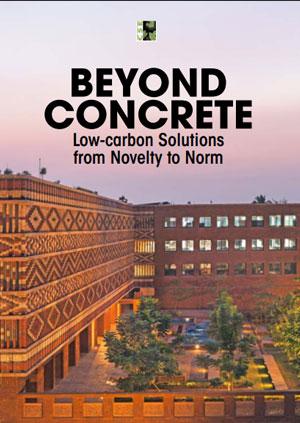Beyond Concrete: Low-carbon Solutions from Novelty to Norm
August 26, 2025
Construction technologies developed over years of experimentation and refinement—often using locally sourced, easily-replenishable and renewable materials—have produced solutions best suited to local climates and challenges. Yet these time-tested, low-carbon methods are rapidly losing ground to fast-paced construction technologies. The market’s focus on speed and shorter deadlines over long-term performance is a short-sighted approach, overlooking the impact on thermal comfort and energy consumption over a building’s lifetime. As a result, these alternative technologies have been pushed to the margins, and treated as novelties rather than the norm
With the rising demand for low-carbon options, these once-marginalized technologies are poised for revival. Limited awareness and fragmented knowledge, however, have slowed their adoption.
This guidebook brings together information scattered on the fringes, offering insights for governments, homeowners and the construction industry. Through practical guidance and policy pathways, it equips stakeholders to integrate these lesser-used methods into the mainstream, ensuring the future of construction is not set in concrete but evolves toward less carbon-intensive practices.

Share this article